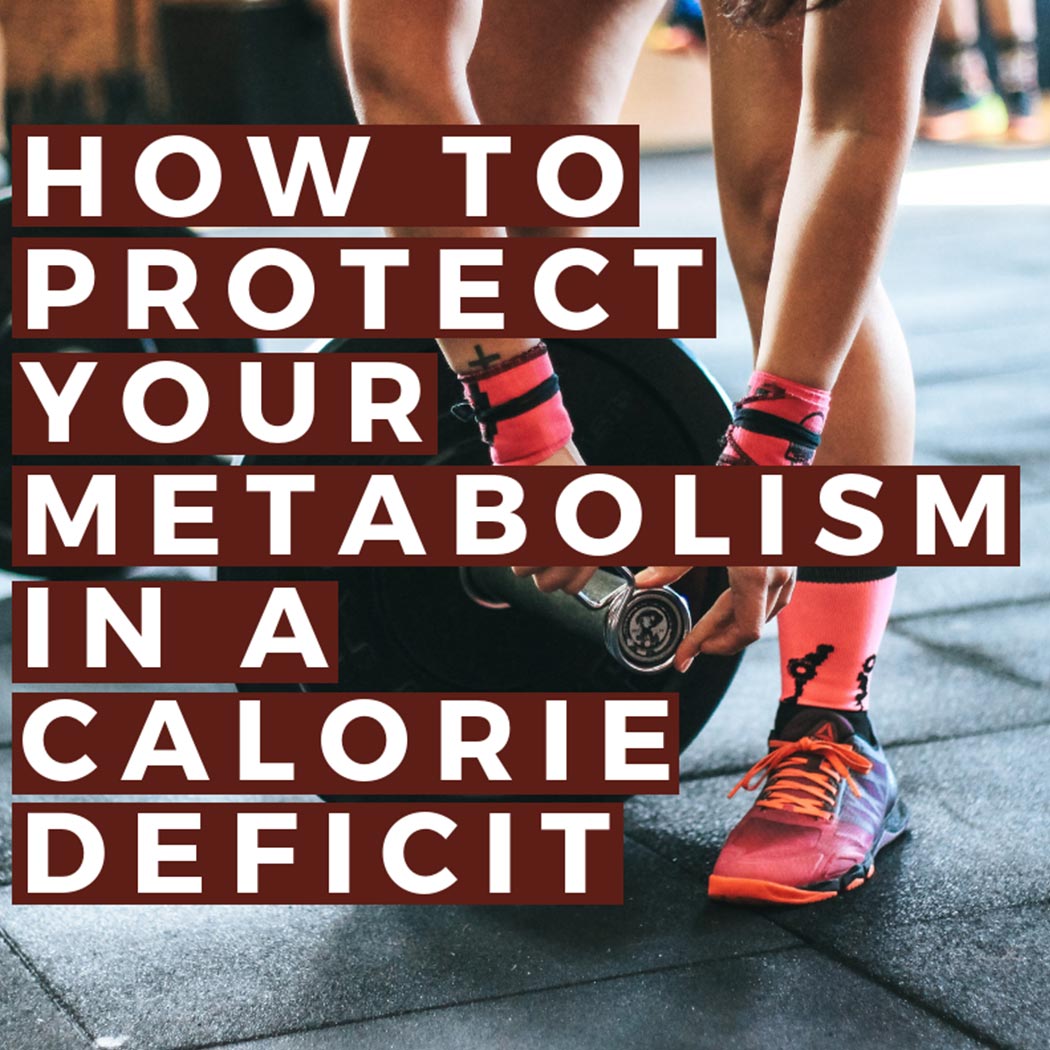Wants to lose weight. Cuts all the calories. Eliminates all the food groups. Eats from a small, limited list of “allowed” foods. Sees short term weight loss results and long term struggle with weight loss maintenance.
Why?
Because drastic changes to your eating habits and physical activity will eventual slow the metabolic rate.
Here are 5 major ways to protect your metabolism while seeing weight and fat loss.
LIFT. HEAVY. WEIGHTS.
You can build and maintain lean muscle mass through any form of exercise, but it’s easiest and most efficient through heavy strength training. Remember, the best form of exercise is the kind that you do consistently and you can enjoy for a long time – even better if it continues to provide a challenge or can be modified as you get fitter and stronger. If you start a strength training routine or simply continue your current one, while in a calorie deficit, you’ll protect your lean muscle mass and therefore, protect your metabolism.
CREATE A MODERATE DEFICIT IN CALORIES AND MACROS.
In order to protect metabolism, you’ll want to create a slight calorie deficit by changing just a few things about your eating pattern or your exercise routine. One of the worst things you could do is create too large, too drastic of a deficit through major changes to your eating pattern and exercise routine.
Find a sweet spot where you are not struggling with hunger, your sleep is great, you have enough energy to exercise – and you’re also seeing fat loss results in the form of measurement changes, clothes fitting differently, and progress pictures. Protect your metabolism by taking things slow!
EAT ENOUGH PROTEIN.
Eating enough protein is important for two reasons.
First, by simply eating protein we can see increases in metabolism or metabolic rate. It is the most metabolically “demanding” macronutrient, meaning the act of digesting, absorbing and storing protein from the food we eat, burns more calories than meals we eat that are comprised of just carbohydrates and fats.
Second, and more important, eating enough protein while in a calorie deficit essentially tells your body to “hold on” to lean, strong muscle while pulling from stored body fat to make up for energy demands. “Enough” depends on your current body composition and size, as well as the type of physical activity that you engage in, but research shows muscle protein synthesis occurs we eat 4 equally sized meals that contained about .4 grams of protein per kilogram of body weight, for a goal of 1.6 grams of protein per kilogram body weight total per day – at a minimum.
To put it more simply, a 150 pound woman would need to consume at least 27 grams of protein in about 4 meals to maximize muscle sparing effects in a calorie deficit. And, even more simply, that’s about a cup Greek yogurt in your breakfast, 3 ounces of blackened fish + black beans in tacos for lunch, a snack with hard boiled eggs and cheese, and 4-5 ounces of chicken in your stir-fry dinner.
You’ll see recommendations for 25-30% of total calories to come from protein or even .8-1.2 grams of protein per pound of body weight. These are all sufficient protein goals to protect lean muscle mass, and therefore your metabolism in a deficit.
CONSIDER RECOMPOSITION PHASES OVER STRICT WEIGHT LOSS OR FAT LOSS PHASES.
Make the distinction between having a weight loss, fat loss or a recomposition goal. Losing weight or body fat “at all costs” is more uncomfortable – requiring strict adherence to macro goals – which could mean fewer social outings, less eating away from the home, and cutting back on your favorite foods and indulgences. It could also be a more drastic calorie deficit than a recomposition goal, for example. Recomposition means you’re interested in losing body fat while gaining or maintaining lean muscle mass and it requires you to find macro goals that support strength training and recovery. Recomposition phases, over weight or fat loss phases, usually inherently protect your metabolism because you’re eating slightly more.
PLAN FOR WHAT'S NEXT.
Anyone ever wonder why weight loss plans and programs don’t have any notes on what to do at the end of your 21 day, 30 day, 12 week cycle? It starts to make you think, “Welp, this is just how I live now!” or “1200 calories is just it for me I guess!” or even,“I better get used to fat free cheese and celery sticks if I want to maintain my results!”?
If a weight loss plan or program does not have any nod at what’s to happen after a focused calorie deficit phase – run. It’s not sustainable and it’s not set up to protect your metabolism because you can’t live in a fat loss phase (calorie deficit) forever.
On the contrary, if you’re planning for a slow, calculated fat loss phase through macro tracking, your coach might encourage a short maintenance period following fat loss, before moving to recomposition, massing or reverse dieting. All of these options will encourage more calories over time for various purposes – but definitely to improve metabolic rate. Moving into any of these phases after a period of focused fat loss will recover the metabolism and ensure that your option is not, to simply, “just eat 1200 calories a day”, forever.
Creating a calorie deficit is essential to see body fat loss from your frame, but it doesn’t have to be synonymous with failed attempts, weight rebound, restriction or deprivation. You can absolutely change your body shape and size with a plan that protects your metabolism at the same time.

